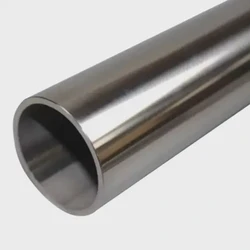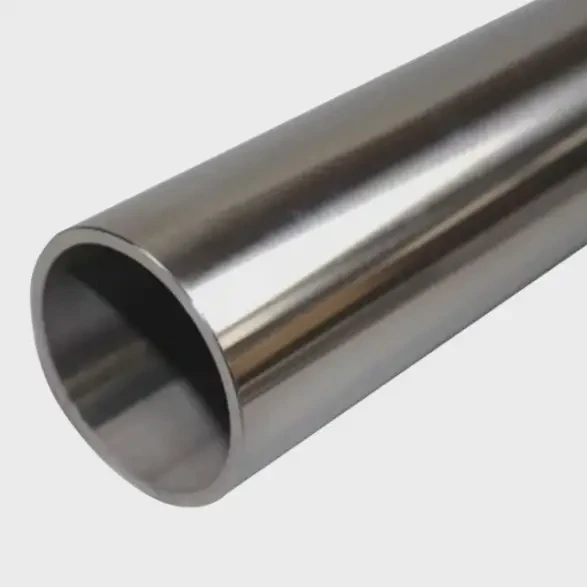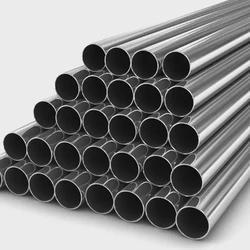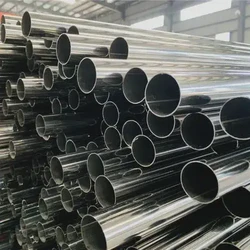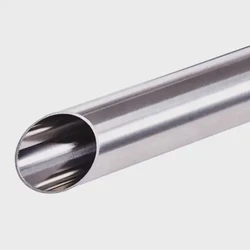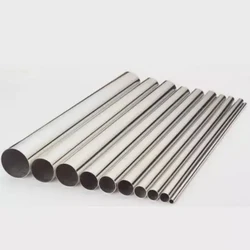ASTM A269 Stainless Steel Pipe
We offer ASTM A269 Stainless Steel Pipe and related grades with 100% factory direct pricing and free quotes available within 6 hours.
ASTM A269 is a widely recognized standard for seamless and welded austenitic stainless steel pipes used primarily for service in temperatures ranging from cryogenic to elevated levels. These pipes, designed to resist corrosion, are found in various industries, including chemical, petrochemical, and food processing. This article delves into the intricacies of ASTM A269 stainless steel pipes, detailing their specifications, applications, advantages, and more, to provide a comprehensive understanding that caters to both industry professionals and procurement managers.
1. What is ASTM A269 Stainless Steel Pipe?
The ASTM A269 standard applies to seamless and welded stainless steel pipes made from austenitic stainless steel grades, such as 304, 304L, and 316. These pipes are designed for use in heat exchangers, boilers, and condensers, where corrosion resistance is a priority. The pipes are typically used in various industries for fluid handling, especially where the material needs to endure extreme temperatures and aggressive environments.
The specific pipe grades under ASTM A269 provide flexibility in terms of strength, corrosion resistance, and formability, making them suitable for diverse industrial applications. The standard ensures that all pipes produced under its scope maintain high quality, consistency, and reliability.
2. Key Specifications of ASTM A269 Stainless Steel Pipe
Material Grades
-
304 Stainless Steel: Commonly used due to its excellent corrosion resistance and good strength at higher temperatures.
-
304L Stainless Steel: A low carbon variant of 304, which offers enhanced weldability.
-
316 Stainless Steel: Known for superior corrosion resistance, especially against chlorides and acidic environments.
Dimensions
-
Outer Diameter (OD): Ranges from 1/8 inch to 12 inches.
-
Wall Thickness: Varies from Schedule 5S to Schedule 160S.
-
Length: Available in standard lengths, often in 6-meter (20-foot) sections or customized lengths.
3. Corrosion Resistance
One of the key advantages of ASTM A269 stainless steel pipes is their ability to resist corrosion, making them ideal for use in environments with aggressive media, including acidic and chloride-rich conditions. The pipes' high chromium content is the primary factor responsible for this resistance, forming a protective oxide layer that shields the material from corrosion.
For example, in marine environments, where the pipes are constantly exposed to saltwater, 316-grade stainless steel is often chosen over 304 due to its enhanced resistance to pitting and crevice corrosion.
4. Applications of ASTM A269 Stainless Steel Pipe
Chemical and Petrochemical Industry
In chemical and petrochemical plants, these pipes are commonly used for the transport of corrosive liquids and gases. They withstand harsh chemicals like acids, bases, and chlorides.
Food and Beverage Industry
In food processing plants, ASTM A269 pipes are used for transporting food-grade liquids and gases, where maintaining the integrity of the product and preventing contamination is essential.
Heat Exchangers and Boilers
These pipes are frequently used in heat exchangers and boilers due to their excellent heat conductivity and resistance to scaling and corrosion.
Pharmaceutical and Biotech
The pharmaceutical industry often employs ASTM A269 pipes for applications requiring sterile conditions and resistance to a wide range of chemicals.
5. Mechanical Properties
The mechanical properties of ASTM A269 pipes vary based on the grade of stainless steel used. Below is a comparison of key mechanical properties:
| Property | ASTM A269 Grade 304 | ASTM A269 Grade 316 |
|---|---|---|
| Yield Strength (min) | 205 MPa | 290 MPa |
| Tensile Strength | 515 MPa | 620 MPa |
| Elongation | 40% | 40% |
| Hardness (Rockwell B) | 80-90 | 80-90 |
As seen in the table, grade 316 offers a higher yield strength, making it more suitable for high-pressure applications.
6. Fabrication and Welding of ASTM A269 Stainless Steel Pipes
Welding of ASTM A269 pipes is commonly done using TIG (Tungsten Inert Gas) welding, a method that ensures minimal contamination. Both grades 304 and 316 are known for their excellent weldability. However, special attention must be paid to prevent carbide precipitation in the heat-affected zone during welding, which can reduce the material’s corrosion resistance.
7. Strengths and Advantages of ASTM A269 Pipes
-
Corrosion Resistance: Provides excellent resistance to various types of corrosion, including pitting and crevice corrosion.
-
Durability: Resistant to high temperatures and pressure, making them durable in demanding environments.
-
Versatility: Available in various grades, lengths, and diameters, allowing for flexibility in application.
-
Hygienic Properties: Easily cleaned, making them ideal for industries that require sanitary conditions, such as food processing and pharmaceuticals.
8. Cost Considerations
While ASTM A269 stainless steel pipes are more expensive than carbon steel alternatives, their long-term durability and resistance to corrosion offer a cost-effective solution over time. The total cost of ownership (TCO) is significantly reduced due to fewer maintenance requirements and longer service life.
9. Case Study: Use of ASTM A269 Pipes in a Chemical Plant
In a large chemical processing facility, ASTM A269 pipes were chosen for the transport of sulfuric acid. Given the harsh nature of the acid, the pipes had to be resistant to both chemical corrosion and high pressure. The plant experienced significant improvements in pipe longevity, reducing replacement costs by 30% over the first five years. This case highlights the value of choosing high-quality materials for critical applications.
10. Frequently Asked Questions (FAQ)
1. What is the difference between ASTM A269 and ASTM A312?
ASTM A312 refers to welded and seamless austenitic stainless steel pipes for high-temperature applications, while ASTM A269 is specifically designed for lower temperature applications like heat exchangers.
2. Can ASTM A269 stainless steel pipes be used for marine applications?
Yes, grade 316 stainless steel pipes are commonly used in marine environments due to their excellent resistance to saltwater corrosion.
3. What is the maximum operating temperature for ASTM A269 pipes?
The maximum operating temperature varies based on the pipe grade. Generally, 304 can withstand temperatures up to 870°C (1600°F), while 316 can handle temperatures up to 925°C (1700°F).
4. Are ASTM A269 pipes suitable for high-pressure applications?
Yes, these pipes can handle high-pressure environments, especially when made from higher grades like 316.
5. How can I ensure the quality of ASTM A269 pipes?
Ensure that the pipes are sourced from reputable manufacturers that comply with the ASTM A269 standard. Certifications and traceability of materials are also crucial in verifying quality.
11. Conclusion
ASTM A269 stainless steel pipes are an excellent choice for industries requiring reliable, corrosion-resistant materials. Whether it's for high-temperature environments, food-grade applications, or the chemical sector, the flexibility and durability of ASTM A269 pipes make them a superior solution. Understanding the technical specifications and choosing the correct grade will ensure the longevity and performance of the piping systems.
Packing And Delivery

OUR FACTORY





CUSTOMER VISIT

HONOR


Recommended Products
Send Inquiry
